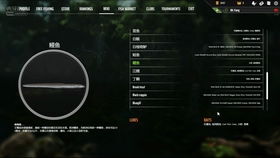Content:
Embarking on the exciting world of fishing can be both thrilling and challenging. One of the fundamental skills every angler must master is the art of reeling in their catch. For beginners, reeling can seem like a daunting task, but with the right techniques and a bit of practice, it can become second nature. Here are some essential tips and tricks to help you get started on the path to becoming a proficient reel master.
Understanding the Reel
Before diving into the techniques, it's crucial to understand the different types of fishing reels available. The two most common types are spinning reels and baitcasting reels. Spinning reels are favored for their simplicity and are often recommended for beginners. Baitcasting reels, on the other hand, offer more precision and are better suited for casting heavier lures and baits. Familiarize yourself with the components of your reel, such as the handle, drag, and spool, as these will play a significant role in your reeling technique.
Choosing the Right Line
The type of fishing line you choose can greatly affect your reeling experience. Monofilament, fluorocarbon, and braided lines each have their advantages and disadvantages. For beginners, monofilament is a good choice due to its flexibility and ease of handling. Fluorocarbon is more expensive but offers better abrasion resistance and is nearly invisible underwater, making it ideal for fishing in clear water. Braided lines are strong and have little stretch, which can be beneficial for detecting subtle bites, but they can be more challenging to manage for beginners.
Loading the Reel

Properly loading your reel with line is essential for smooth reeling. Start by threading the line through the guides on your rod, ensuring it runs smoothly from the spool to the tip of the rod. Once the line is through the guides, tie a secure knot at the end of the line, such as a Palomar or a uni-knot, and attach it to the reel's spool. Wind the line onto the spool in a uniform pattern, avoiding twists and kinks. The line should be tight but not too tight, as this can cause it to break under tension.
Basic Reeling Technique
When it comes to reeling in your catch, the key is to maintain a steady and consistent pace. Here's a step-by-step guide to help you get started:
Grip the Reel: Hold the reel with your dominant hand, using your thumb and index finger to grip the handle. Your fingers should be wrapped around the handle, providing a secure yet comfortable grip.
Press the Drag: Before you start reeling, press the drag on your reel. This will help to prevent the line from snapping under the weight of a fish. Adjust the drag to a setting that allows the line to move smoothly but can handle the weight of the fish you're targeting.
Start Reeling: Begin reeling slowly and steadily. Avoid quick, jerky movements, as these can cause the line to twist or the fish to become unhooked. The key is to maintain a consistent tension on the line.
Adjust Your Pace: If you feel resistance, slow down your reeling pace. If the fish starts to pull away, increase your pace slightly. The goal is to keep the fish under control while bringing it to the boat or shore.
Handle the Line: Keep your wrist loose and let the line flow through your fingers. This will help you maintain a better grip and prevent the line from getting tangled.
Advanced Reeling Techniques
Once you've mastered the basic reeling technique, you can start exploring more advanced methods:
Slowing Down: If you're fishing in heavy cover or around structures, slowing down your reeling can help you avoid snags and keep the fish interested in your bait.
Speed Reeling: For larger fish or when you want to cover more water, speed reeling can be effective. This involves reeling in the line quickly and smoothly, but it requires practice to avoid line twists and breaks.
Using the Drag: The drag on your reel is a powerful tool. Learn to use it effectively to control the speed of the fish's retreat and to prevent it from pulling the line off the spool.
Conclusion
Reeling in a fish is a satisfying part of the fishing experience, and with the right techniques, even beginners can become proficient. By understanding your reel, choosing the right line, and practicing the basic reeling technique, you'll be well on your way to becoming a confident angler. Remember, patience and practice are key, so don't get discouraged if you encounter challenges at first. With time, you'll develop a feel for the water and your equipment, and the thrill of reeling in your first catch will be all the more rewarding. Happy fishing!












